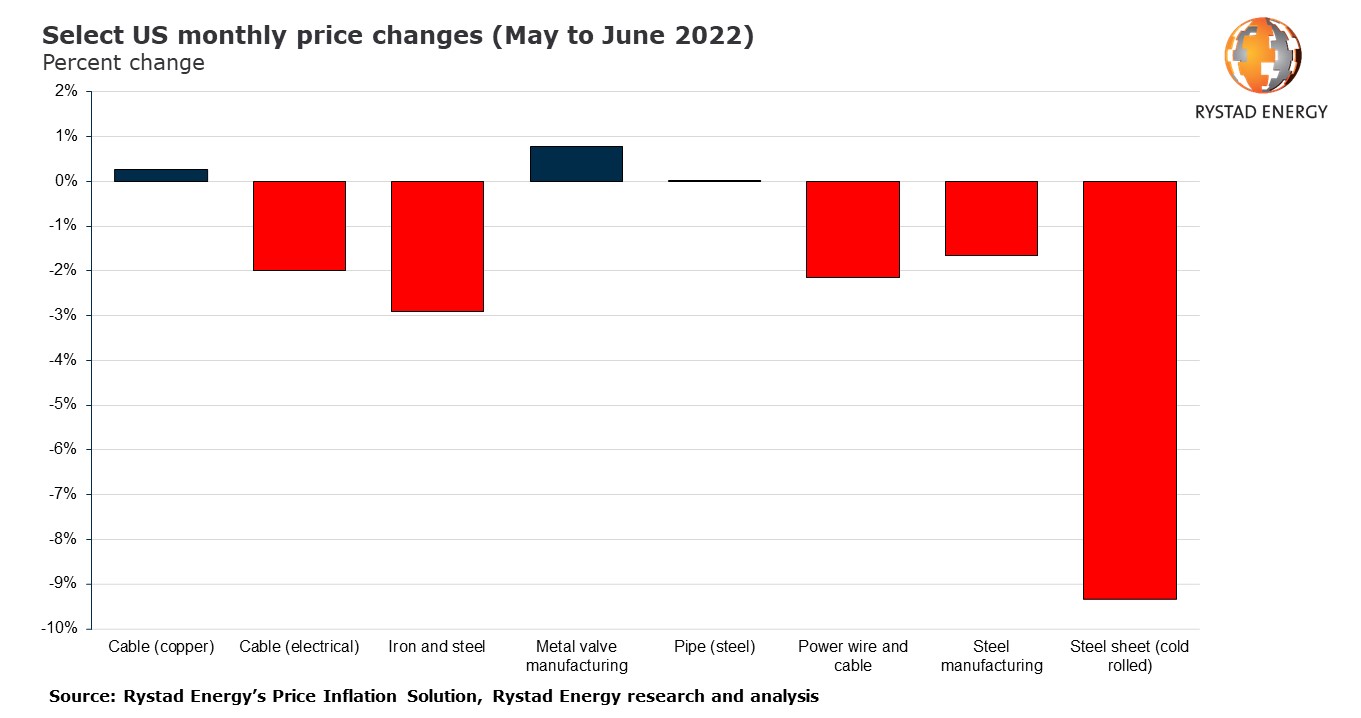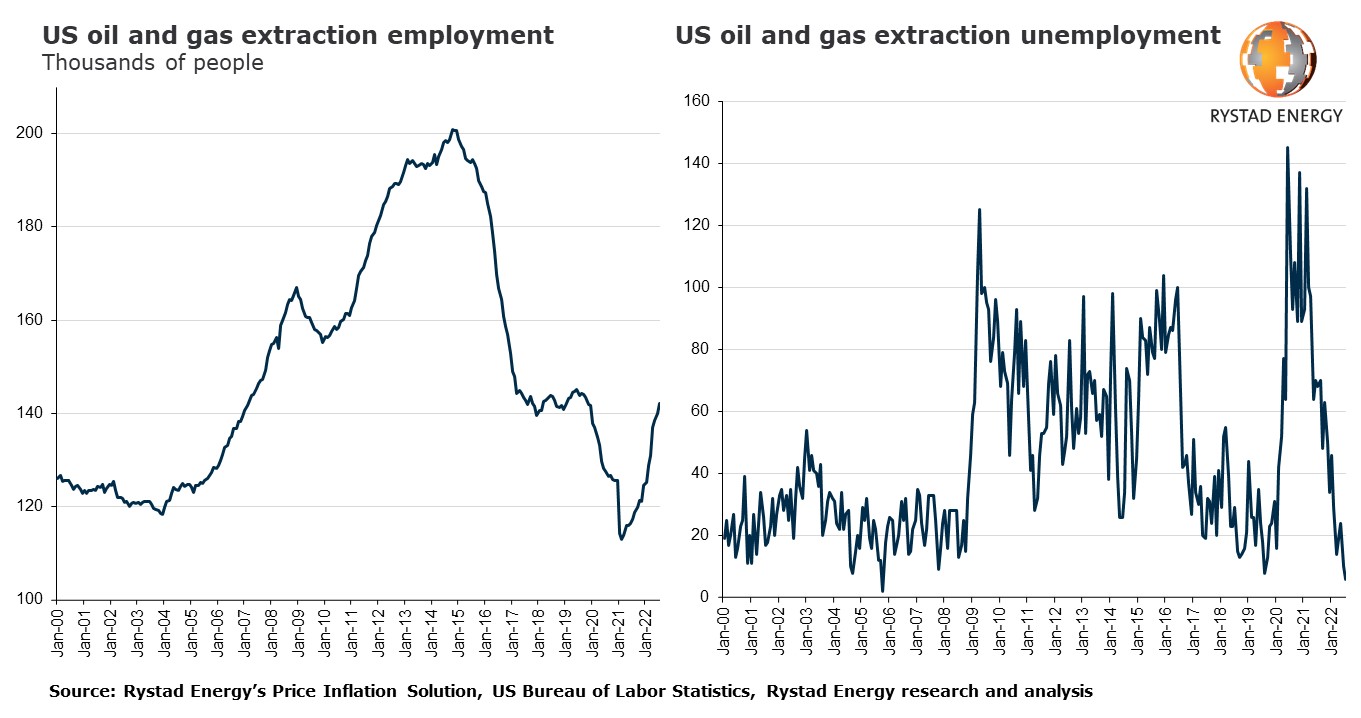Contrary to its title, the US Inflation Reduction Act will usher in more energy service inflation in the next 18 months as the incentives offered to manufacturers struggle to keep up with the increased demand triggered by the bill. If signed into law, Rystad Energy’s research shows that there will be a positive impact on domestic energy security and the US’ position in the global low-carbon supply chain, but significant growing pains are likely in the coming years.
The bill will provide over $100 billion to accelerate construction start dates for low-carbon developments, including solar, wind and battery storage. These measures will undoubtedly increase renewable energy installations and short-term demand for US manufacturing, given the focus on domestic production and procurement. However, the $60 billion provided for expanding manufacturing capabilities will struggle to alleviate existing inflation or even keep pace with expected growth.
Deflationary clouds have recently circled above the US energy industry, with the cost of goods and services falling across several disciplines. In June 2022, prices fell across civil, mechanical and electrical goods and services month-over-month, with steel leading the way. The extent to which this deflation will pick up speed or stall depends mainly on the economic moves by the US’ biggest global economic adversary – China.
Producer inflation in China is at an almost 18-month low as manufacturing capacity increases and coincides with a global demand decrease. The country’s short-term stimulus policies will significantly impact the global inflation outlook. If China employs low expansionary policies, new project module construction prices will start to fall before the end of this year. On the other hand, high expansionary policies – which are now a viable option for policymakers due to recent domestic slowdowns caused by weakening global demand – would increase prices by an additional 10% this year and only start to fall in 2023.
“Cost inflation in the US energy industry has hit operators, manufacturers and suppliers hard – and the Inflation Reduction Act shows no signs of addressing that in the near term. The fate of the industry’s future inflation or deflation lies firmly in the hands of the Chinese, fittingly, as US policymakers attempt to build and strengthen a domestic supply chain and attempt to avoid such reliance in the future,” says Matthew Fitzsimmons, senior vice president with Rystad Energy.

In what is a piece of good news for the US onshore industry, China’s actions are unlikely to impact inflation, but they may still be exposed to additional price increases. Supply and demand balances in US shale reign supreme and will continue to push project costs higher over the next year despite falling raw material prices. For example, increased activity has driven spot land rig prices to double their 2016 values. Planned E&P activity through next year will push average high spec rates above $33,000 per day.
Impact on US manufacturing
In an attempt to stoke domestic clean energy manufacturing in the US, the bill incentivizes manufacturers with incentives on components necessary for clean energy projects. These incentives will help to increase the domestic supply of critical components in both wind and solar infrastructure, encouraging developers to ramp up production and boost clean energy capacity. The bill’s wind and solar industry incentives reward manufacturers based on a facility's overall power generation rather than the components' quantity or size. These incentives bode well for reversing rampant price inflation of offshore wind components by incentivizing manufacturers in the US to ramp up production.

Impact on the labor market
Elements of the Inflation Reduction Act are designed to boost the domestic energy labor market with wage requirements for developers to take advantage of tax credits. The number of US oil and gas extraction employees has grown by 25% in the past 18 months, returning to pre-Covid-19 pandemic levels. As a knock-on effect, the number of unemployed American workers actively looking for oil and gas jobs has been at its lowest since 2005. While previous wage premiums have saved the day and enticed workers to help grow domestic oil and gas production previously, the bill will pose new competitive challenges for oil and gas recruitment.
To receive tax credits for clean energy projects, developers must comply with wage requirements set by the Secretary of Labor. Wage rates will be determined by averages based on region and job title to ensure that workers also benefit from the legislation. Developers found to be underpaying workers will have to pay fines to compensate for violations or risk losing their tax benefits.
Additionally, these projects require apprenticeship thresholds to be met for developers to receive full tax benefits. For projects commenced in 2022, 10% of all labor hours spent on construction, alteration, or repairs must be performed by qualified apprentices. This percentage increases to 12.5% in 2023 and 15% in 2024. Some roles, including supervisors, superintendents and administrative staff, are excluded from these rules, so in practice, they only apply to employees directly involved in installing or maintaining facilities.
The increase in apprentices will likely cause productivity declines for clean energy projects. More inexperienced workers will likely lead to more inefficiencies on job sites. However, investing in a healthy labor force through these requirements will increase productivity in the long run and stabilize hourly wages for developers as workers graduate from apprenticeship programs and develop the skills necessary to complete and maintain clean energy projects.

Follow us on social media: